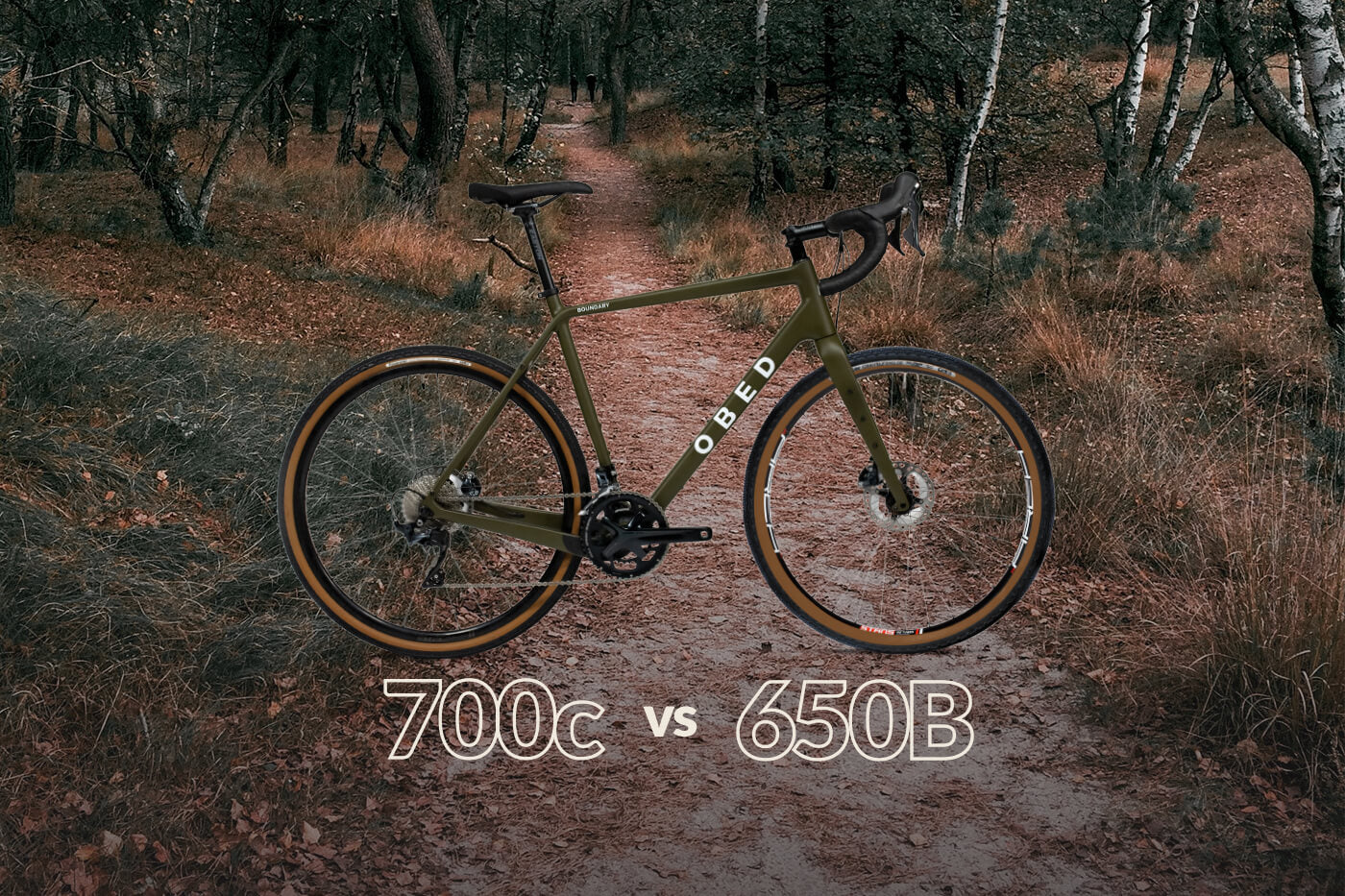
700c versus 650B: The Gravel Wheel Conundrum...Solved!
Obed one of a few direct-to-you companies that offer you not only the flexibility to run both 700c and 650b wheels in the same Obed Boundary frame, but also presents you choice of 700c or 650b wheels when you’re buying your bike.
With that option comes the question: Why choose either? Which is better for the riding I’m going to be doing? We explain each wheel size and the benefits to each.

700c: Speed is what you Need
If you’ve been riding road bikes, 700c wheels are likely the wheels you’re most familiar with, having long been the standard for today’s road and triathlon bikes. With a large diameter rim, they were designed to roll fast. With knobby or siped tread of gravel tires installed, and a smaller contact patch that rolls faster over graded dirt roads, 700c gravel wheels were designed to do the same: deliver efficient speed over gravel terrain.
It’s also highly versatile; while you can run high tire pressures in 700c wheels for speed, capable of aptly handling most every condition.. but really shining when race day brings one priority: speed. Ride an equal split of dirt and pavement, or like to simply hammer on the weekends with your friends—and of course hammer on race day? 700c is your wheel of choice.
Because the larger wheel fits deeper into the frame’s chainstays and seatstays in the rear (and within the fork blades toward the fork crown), frame and fork clearance limitations do put a ceiling the size of tire you can conceivably use. Thus, most 700c wheels on gravel bikes can accept tires anywhere from your standard 25mm road tire (more on that later) to upwards of 42mm. As you go up in tire size, you get a greater tire contact patch with the ground, more traction, more option to run lower tire pressures, and more shock-absorbing cushion.
In short, 700c is the standard-bearer wheelset.

650B: Comfort and Handling Champions
Running a 650B wheel puts a whole other gravel riding priority set forward: comfort and improved handling.
With its smaller diameter, 650B wheels share more in common with today’s mountain bike wheel. With that smaller diameter comes the ability to run a much fatter, more plush tire, from 40mm up to 2.1 inches. With a bigger tire comes more contact patch, option for bigger tread, and greater traction. When things get muddy, sandy or steep, bigger tires (on a 650B wheel) can simply handle the tough stuff much easier, especially at low speeds. It’s not to say 650B is a slow wheel by any stretch. Rather, you simply sacrifice some of that top-end speed capability that 700c wheels often enjoy.
By the nature of its size, a smaller diameter 650B wheel can turn tighter corners and make quick balance adjustments with great ease, thus making it a great choice for those riding technical courses. And, when matched with a standard road groupset, the smaller gear ratios in the smaller 650B wheel delivers even better climbing gearing. Prefer to ride slower, explore and just play around on the bike, with races not necessarily in your future? 650B is a great choice.
Are you a smaller rider? For riders under, say, 5’6, a bike outfitted with 650B wheels make a natural choice. From a low-speed handling standpoint, the bike can maintain better handling characteristics; the bike is more “underneath” them than out front. Additionally, while most small riders have problems with toe overlap while steering at low speed, a bike outfitted with 650B wheels can navigate in the same way without risk of excessive toe overlap.
Bikepackers also enjoy 650B wheels. With a greater degree of all-day-riding compliance using a wheel with fluffier tires, eight hours in the saddle with a bike loaded with bags on bumpy trails goes by more painlessly with a bigger tire providing a bit more cushioning to your ride.
The Case for a Spare Road Wheelset
With that in mind, we do make a small suggestion to consider: having a spare wheelset with slick tires, as well as a matching road-specific cassette, like an 11-28. 700c or 650B doesn’t much matter. What it does is provide you the ability to enjoy your bike on the road. Sure, you can ride your gravel tires on the road, but when your friends are out for the group coffee ride, your Obedgravel bike can be magically transformed into a speedy road machine, without the hinderances of a wide, treaded tire slowing you down on the pavement. (Sure, you can simply change the tires on your one wheelset, but if you’re running tubeless with sealant, do you really want to be switching tires back and forth? We don’t either.)
The wonder of gravel riding is that it can be anything you want. With choice of 700c or 650B wheels, that choice can truly tailor to the riding experience you seek. Of course, if you have any more questions about which is the right choice for you, the terrain you ride, and your gravel riding goals, our Obed team is always here via LiveChat to help you make the right choice.